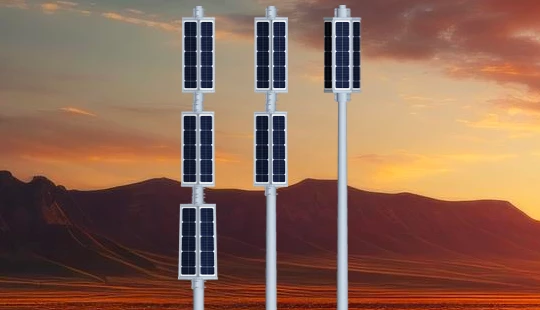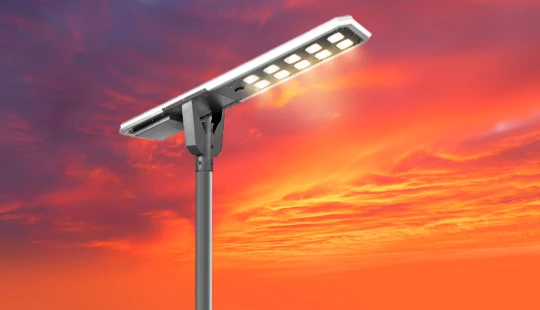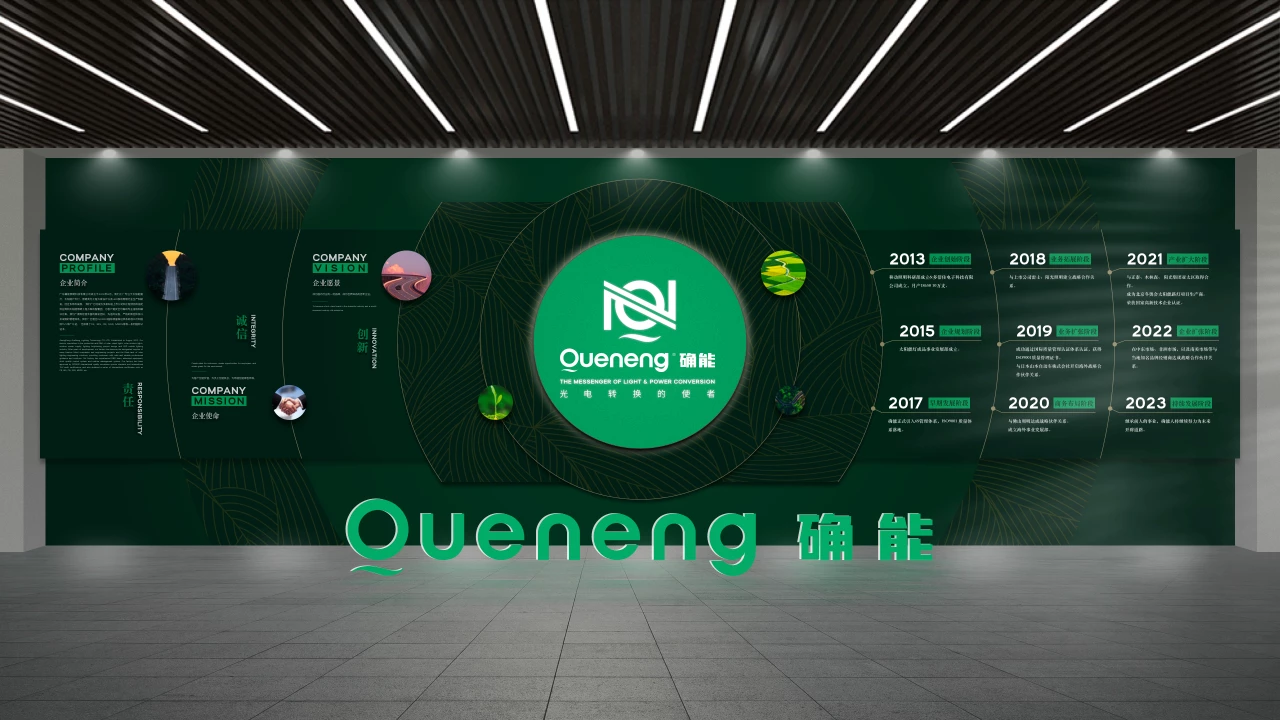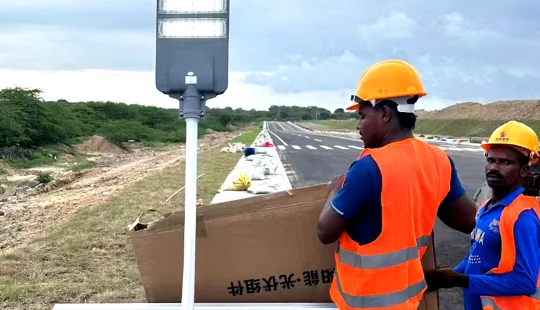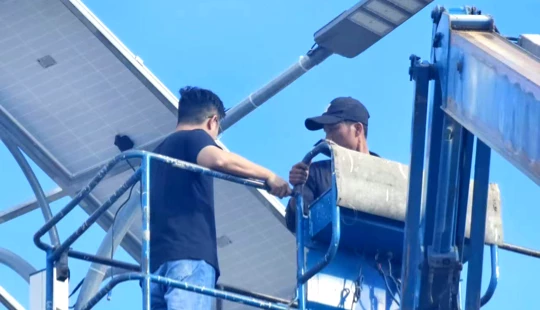solar panel and battery relationship | Quenenglighting Expert Guide

Understanding the Symbiotic Relationship: Solar Panels and Batteries in Solar Lighting
Navigating the complexities of solar lighting procurement requires a deep understanding of how solar panels and batteries work in harmony. This comprehensive article addresses key questions for professionals and buyers, covering system sizing, battery type selection, lifespan optimization, and the crucial role of charge controllers. Equip yourself with the knowledge to design and purchase robust, efficient solar lighting solutions tailored to your project's needs and ensure long-term reliability and cost-effectiveness.
How Do Solar Panels and Batteries Work Together in a Solar Lighting System?
In a solar lighting system, the solar panel, battery, and charge controller form an interconnected system designed for energy capture, storage, and utilization. The solar panel (photovoltaic module) is responsible for converting sunlight into direct current (DC) electricity. This electricity then flows to a charge controller, which acts as the 'brain' of the system, regulating the voltage and current to safely and efficiently charge the battery. The battery serves as the energy storage unit, accumulating the electrical energy generated by the solar panel during the day. When sunlight is unavailable, such as at night or during cloudy periods, the stored energy in the battery powers the LED light fixture. This continuous cycle ensures reliable illumination without reliance on the grid.
Sizing Your System: How to Match Solar Panels and Batteries for Optimal Performance?
Proper sizing is critical for the longevity and reliability of a solar lighting system. It involves matching the solar panel's power generation capacity with the battery's storage capacity to meet the required energy consumption of the light fixture. Key steps include:
- Determine Load Consumption: Calculate the total Watt-hours (Wh) required by the light fixture per night (e.g., LED wattage × hours of operation).
- Identify Peak Sun Hours (PSH): Find the average daily peak sun hours for your specific geographic location. This data is crucial as it represents the equivalent hours of full sun intensity.
- Calculate Battery Capacity: Based on the load consumption and desired days of autonomy (how many days the system can run without sun), calculate the required battery capacity in Ampere-hours (Ah) or Watt-hours (Wh). Consider the battery's Depth of Discharge (DoD) – for lead-acid, typically 50%; for LiFePO4, 80-100%. A common calculation is:
Battery Capacity (Wh) = (Daily Load (Wh) × Days of Autonomy) / Max DoD. - Calculate Solar Panel Size: The panel must generate enough energy to replenish the battery daily and cover losses. A common formula is:
Panel Wattage (Wp) = (Daily Load (Wh) × System Losses Factor) / PSH. It's often recommended to slightly oversize the panel (by 15-30%) to account for cloudy days, panel degradation, and temperature effects.
For example, a street light requiring 50Wh per night in an area with 4 PSH and needing 3 days of autonomy with a LiFePO4 battery (80% DoD) would need a battery of approximately (50 Wh/day * 3 days) / 0.8 = 187.5 Wh. Factoring in system losses (around 20-30%), a 50Wp panel would likely be sufficient: (50 Wh/day * 1.25 loss factor) / 4 PSH ≈ 15.6 Wp, but typically a 50Wp to 80Wp panel is selected to ensure consistent charging and account for seasonal variations.
Which Battery Type is Best? A Guide for Solar Lighting Procurement
The choice of battery significantly impacts a solar lighting system's performance, cost, and lifespan. The two dominant types are Lead-Acid and Lithium-ion, with Lithium Iron Phosphate (LiFePO4) being the most prevalent lithium chemistry in solar lighting due to its safety and stability:
- Lead-Acid Batteries (GEL, AGM, Flooded): These are traditionally more affordable upfront. However, they have a shorter cycle life (300-1000 cycles at 50% DoD), lower energy density, are heavier, and are sensitive to deep discharges and temperature fluctuations. Flooded lead-acid batteries also require regular maintenance (topping up water). Their efficiency is typically 70-85%.
- Lithium Iron Phosphate (LiFePO4) Batteries: While having a higher upfront cost, LiFePO4 batteries offer significant long-term advantages. They boast a much longer cycle life (2,000-6,000 cycles at 80-100% DoD), higher energy density, lighter weight, faster charging capability, excellent thermal stability, and are virtually maintenance-free. Their efficiency is notably higher at 90-99%. For modern solar lighting projects, especially where long-term reliability and lower total cost of ownership (TCO) are priorities, LiFePO4 is the preferred choice.
Maximizing Longevity: Factors Affecting Solar Panel Battery Lifespan
The lifespan of a solar battery is not solely determined by its type but also by how it's used and maintained. Key factors influencing battery longevity include:
- Depth of Discharge (DoD): Deeper discharges (draining the battery more) reduce its cycle life. Batteries last longer when discharged to a shallower DoD.
- Temperature: Extreme temperatures (both hot and cold) can significantly degrade battery performance and shorten lifespan. For LiFePO4, high temperatures accelerate capacity fade, while extreme cold can reduce usable capacity and impact charging rates.
- Charge/Discharge Rates: Charging or discharging a battery too quickly can stress its internal components and reduce efficiency.
- Proper Charging: Overcharging or undercharging can cause irreversible damage. Overcharging can lead to overheating and electrolyte breakdown (in lead-acid), while undercharging (especially in lead-acid) can lead to sulfation, reducing capacity.
- Maintenance (for Lead-Acid): Regular checks on electrolyte levels and specific gravity are crucial for flooded lead-acid batteries.
- Quality of Components: A high-quality battery management system (BMS) for LiFePO4 batteries is essential for cell balancing, overcharge/discharge protection, and temperature management, directly contributing to battery longevity.
The Role of Charge Controllers: Optimizing Power Flow and Battery Health
Charge controllers are vital intermediaries between the solar panel and the battery, playing a critical role in optimizing power transfer and protecting the battery. The two main types are Pulse Width Modulation (PWM) and Maximum Power Point Tracking (MPPT):
- PWM Charge Controllers: These are simpler and generally less expensive. They work by reducing the voltage from the solar panel to match the battery voltage during the bulk charging stage and then

Have more questions about our products or services?
The latest hot news you might like

Discover how solar panels power street lights, exploring the technology behind solar energy conversion, storage systems, and how solar-powered street lights are revolutionizing urban and rural lighting solutions.

Learn how AC Solar Hybrid Street Lights work, their advantages, disadvantages, system behavior in low-sunlight conditions, and why hybrid technology is ideal for regions with unstable sunlight.

Municipalities around the world are increasingly adopting solar-powered streetlights as part of their urban development strategies. Rising energy costs, the need for sustainable infrastructure, and government green initiatives are driving cities to switch from traditional street lighting to advanced LED solar streetlights.
Queneng Lighting provides municipalities with cost-effective, energy-efficient, and durable solar lighting solutions, ensuring safe and sustainable public spaces.
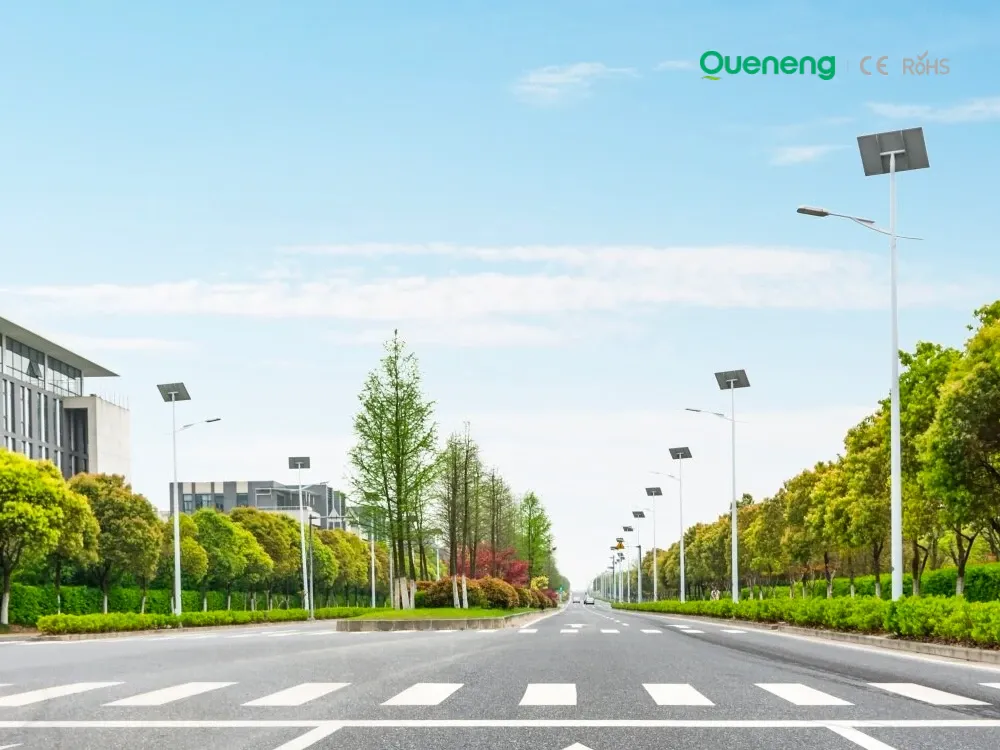
In recent years, the purchase of solar streetlights for municipalities has become a growing trend across the globe. Local governments are under pressure to reduce public expenditure, promote green energy, and create safer communities. Solar streetlights provide a reliable, cost-effective, and sustainable solution that meets these needs. Queneng Lighting, as a leading solar street lighting manufacturer, has supported multiple municipal projects worldwide with customized and energy-efficient solutions.
FAQ
Sustainability
What factors should be considered when choosing an installation location?
Solar street lights should be installed in areas with abundant sunlight and minimal obstructions to ensure the photovoltaic panels receive maximum sunlight. Avoid locations close to trees or tall buildings that could cast shadows on the panels.
Solar Street Light Lulin
What makes Lulin solar street lights high-performance and energy-saving?
Lulin solar street lights are designed with high-efficiency solar panels and cutting-edge LED technology, providing optimal brightness with minimal energy consumption. The LED lights consume less power while offering superior illumination, and the solar panels capture and store sunlight efficiently, ensuring the lights perform well even in low sunlight conditions.
Solar Street Light Luqing
How long does the solar street light last?
The lifespan of a solar street light depends on the quality of the components, but typically, the solar panels can last up to 25 years, and the LED lights last 50,000 hours or more. The battery generally lasts between 3-5 years, after which it may need to be replaced.
Distributors
Can I get exclusive distribution rights in my region?
-
Exclusive distribution rights are available in select regions based on market conditions and your business capabilities. Please contact us to discuss opportunities for exclusive distribution in your area.
-
What types of products do Queneng distributors offer?
Queneng offers a range of solar lighting solutions, including street lights, garden lights, floodlights, and customized lighting systems for residential, commercial, and infrastructure applications.
Battery Performance and Testing
What are the common charging methods?
1) Constant current charging: The charging current is a certain value during the entire charging process. This method is the most common;
2) Constant voltage charging: During the charging process, both ends of the charging power supply maintain a constant value, and the current in the circuit gradually decreases as the battery voltage increases;
3) Constant current and constant voltage charging: The battery is first charged with constant current (CC). When the battery voltage rises to a certain value, the voltage remains unchanged (CV), and the current in the circuit drops to very small, eventually tending to 0.
How to charge lithium battery:
Constant current and constant voltage charging: The battery is first charged with constant current (CC). When the battery voltage rises to a certain value, the voltage remains unchanged (CV), and the current in the circuit drops to very small, eventually tending to 0.


Queneng's Luzhou Solar Street Light provides sustainable, energy-efficient outdoor LED lighting. Powered by solar energy, it's a cost-effective and eco-friendly solution for illuminating streets and pathways. A reliable and durable LED solar street light.

Queneng’s Solar Street Lights are designed to provide reliable, energy-efficient lighting for streets, parks, and other outdoor spaces.

Experience reliable outdoor illumination with our smart solar street light, a perfect combination of advanced technology and eco-conscious design.

Queneng's Luqiu Innovative Solar Street Light offers energy-saving, durable outdoor lighting. This solar power street light provides a reliable and eco-friendly solution for illuminating your streets and pathways.

Queneng's Luxian Reliable Solar Street Light offers energy-saving LED lighting for outdoor use. This durable, solar-powered street light provides reliable illumination, reducing energy costs and environmental impact. A perfect solution for sustainable outdoor lighting.
If you would like more information about Queneng solar lighting solutions, please send us a message by filling out the form below. Our professional team will get back to you within 24 hours!
Rest assured that your privacy is important to us, and all information provided will be handled with the utmost confidentiality.
Schedule a Meeting

Book a date and time that is convenient for you and conduct the session in advance.
Have more questions about our products or services?

